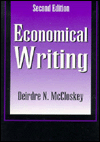Writing Assignment
ECON2101W Economic History of Europe
| Structured Paper |
This is a “W” course. That means that much of your grade must depend on a writing assignment graded for writing style as well as content. I take this requirement seriously. Your assignment will be what I call a “structured” paper. That is, it will be a long (20 pp+) paper that will follow a preset outline. Sections of the paper will be due over the course of the semester.
The paper you are to write will be an economic history of one particular country in Europe (Eastern or Western). You can choose any country that interests you. Your history will be chronological.
I will return each draft section with comments. You will revise the section according to my comments, and you may return it to me for additional comments as many times as you like. At the end of the semester, you will put all the pieces together and turn in a finished paper on the last day of class. You should also keep a running bibliography, to which you can add with each succeeding section.
Your paper should develop the following theme, which is essentially the theme of the course: what were the social institutions and economic conditions that led this country to develop (or fail to develop) economically? I encourage and expect you to find sources and references beyond what I have assigned for class readings.
Schedule of assignments
Date Section due Comments May 19 Proposal One page: choose a country and give reasons for your interest in it. June 9 Ancient Before the year 1000 June 28
Medieval 1000-1500 July 21 Mercantilist 1500-1750 August 11 Industrial 1750-1914 August 18 Final version All sections rewritten, with complete bibliography. Note: The terms “medieval,” “mercantilist,” etc., are common labels for periods of development in the most advanced countries of Western Europe. Your country may not follow this pattern very well. Use the dates given as your guide.
Grading The writing assignment will count for 42 per cent of your course grade. I will grade each installment separately. The four installments will be worth five per cent of the course grade each. You may revise the installments and resubmit them to me for additional comments; but your installment grade will not change, that is, your grade for each installment will be based on the first submission. I reserve the right to lower your grade in any installment that you submit after the deadline — the later the submission, the lower the grade.
You will be graded according to this rubric. A grade of 3 is average and is equivalent to a score of 80 out of 100 (5=100, 4=90, 3=80, 2=70, 1=60, 0=0).
Weight
Unsatisfactory
0 pointsMinimal Proficiency
(1 or 2 points)Moderate Proficiency
(3 or 4 points)Excellent
(5 points)CLEAR THESIS: Identifies and addresses a clear central thesis, expressed early in the paper, either directly in a topic paragraph or indirectly through an appropriate rhetorical device (like an anecdote). Argument clearly expressed and sustained throughout paper. 8%
DEPTH OF ARGUMENT: Body of paper supports central thesis; brings to bear appropriate and persuasive evidence. Conceptual sophistication and engagement with topic; recognition of limitations and counterarguments; thoughtfulness; originality of ideas; appropriate number of pages. Explicit use of economic theories, models, and data. 20%
USE OF SCHOLARLY SOURCES: Marshals sources that are scholarly and reliable by the standards of the Economics profession (like journals, working papers, scholarly books, government and NGO websites); sources are adequate in number and appropriate for the paper’s argument. Sources are integrated into the flow of the argument and used appropriately in the context of the argument. 12%
STRUCTURE OF PAPER: Presentation is well organized: clear topic sentences; good transition between ideas; all sections of paper tie together. 8%
STYLE: Style is direct, concise, and lively; avoids excessive and unexplained jargon and acronyms; refrains from clichés and bureaucratic formulations. 8%
LANGUAGE: Tone, terminology, and other language choices appropriate to professional economics, to intended audience, and to type of writing. 8%
PRESENTATION: Grammar, mechanics, diction, spelling, punctuation, proofreading, and formatting. Consistent and appropriate verb tense; crisp pronoun and clause references; correct parallel structure. 8%
DATA: Where appropriate, presentation and analysis of data (including econometric results) in conformance with the style and norms of writing in Economics. Tables and graphs clearly labelled and attributed. 8%
CITATIONS: Appropriate, accurate, and consistent in-text citations and list of works cited. Command of name-date style of citation used in Economics. 8%
HOLISTIC RATING: Assessment of the paper as a whole, including the soundness and sophistication of its arguments and its fit with the rhetoric of discourse in Economics. 12%
Final Paper The final paper is due on August 20, 2023. It will count 22 per cent of the course grade.
Course Grading Summary
Discussion 15%
Quizzes 18%
Final exam 25%
Installment 1 5%
Installment 2 5%
Installment 3 5%
Installment 4 5%
Final draft 22%
I strongly recommend this book:
Economical Writing
by Deirdre McCloskey
Waveland Press, 2nd edition, 1999.My own Notes on Writing cover the basics, including the theory and mechanics of scholarly citation, something we will stress in this class. You may also benefit by consulting the UConn Writing Center.
Video Podcasts Here are some lectures — I call them video podcasts — that go over the basics of writing. I strongly urge you to watch them.
Citing Sources
Active Writing
Edit! Edit! Edit!
Plagiarism The UConn student conduct code defines plagiarism as “presenting as one’s own the ideas or words of another for academic evaluation.”
I take plagiarism seriously. If you have questions or concerns, please ask me.
